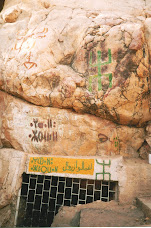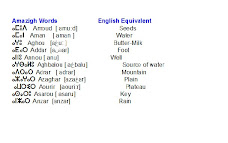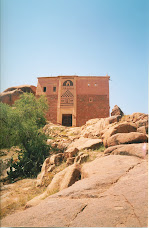 Years ago women had more time to create colorful rugs and carpets, mixing different plants from the Atlas Mountains to find a special color. They tried to create a piece of art better than their neighbor. Rugs and carpets had many functions within the family. The rugs were not only used as cover, but as an element of prestige between the tribes, a means of communication to express suffer and harshness of the countryside. While reading the carpets made throughout Morocco, you can live the saga of the old generations, their life style, values, and morals. The geometric forms, and the choice of color reflect the mood of the woman-artist who put this combination together. These enigmatic, geometric forms will be found in the old jewelries and old Kasbahs, which remains the clues of unsolved civilization. The famous carpet of Ait wawzgite (1) remains one of the best variant of the Amazigh rugs, though people in power dominated most the old and unique collection. A lovely book by Margaret Courtney Clarke, entitled " Imazighen: The Vanishing Traditions of Berber Women", depicts Amazigh rugs and their features.
Years ago women had more time to create colorful rugs and carpets, mixing different plants from the Atlas Mountains to find a special color. They tried to create a piece of art better than their neighbor. Rugs and carpets had many functions within the family. The rugs were not only used as cover, but as an element of prestige between the tribes, a means of communication to express suffer and harshness of the countryside. While reading the carpets made throughout Morocco, you can live the saga of the old generations, their life style, values, and morals. The geometric forms, and the choice of color reflect the mood of the woman-artist who put this combination together. These enigmatic, geometric forms will be found in the old jewelries and old Kasbahs, which remains the clues of unsolved civilization. The famous carpet of Ait wawzgite (1) remains one of the best variant of the Amazigh rugs, though people in power dominated most the old and unique collection. A lovely book by Margaret Courtney Clarke, entitled " Imazighen: The Vanishing Traditions of Berber Women", depicts Amazigh rugs and their features.Nowadays few families live on carpets as before. The old quality of the rug does not exist anymore with some exceptions to modernized styles with artificial raw materials. The producers have to adapt the new features of the market apposed by an economy based on tourism. Year ago, there was a show of carpets in the famous Jamaa Lafna Place (2) in Marrakesh to promote this heritage, but it does not reflect carpets as heritage items created by Imazighen (3) but as souvenir products to sell for tourists. Meanwhile the Amazigh families are not taking any direct benefits for their hard job, lasting weeks and sometimes months. The Amazigh Heritage Museum in Agadir is the only heritage institution bearing the name of Amazigh, while all other museums do not have any clue to the mother civilization. Creating such an institution will give access to the public to know more about our history, which will enlighten the future.Glossary: 1: Amazigh tribe by the same name in the region of Ouarzazate. 2: A place of artistic performance in Marrakesh. 3: The first inhabitants of North Africa. Brahim Boussaid Amazigh Culture Interpreter Years ago women had more time to create colorful rugs and carpets, mixing different plants from the Atlas Mountains to find a special color. They tried to create a piece of art better than their neighbor. Rugs and carpets had many functions within the family. The rugs were not only used as cover, but as an element of prestige between the tribes, a means of communication to express suffer and harshness of the countryside. While reading the carpets made throughout Morocco, you can live the saga of the old generations, their life style, values, and morals. The geometric forms, and the choice of color reflect the mood of the woman-artist who put this combination together. These enigmatic, geometric forms will be found in the old jewelries and old Kasbahs, which remains the clues of unsolved civilization. The famous carpet of Ait wawzgite (1) remains one of the best variant of the Amazigh rugs, though people in power dominated most the old and unique collection. A lovely book by Margaret Courtney Clarke, entitled " Imazighen: The Vanishing Traditions of Berber Women", depicts Amazigh rugs and their features.
Nowadays few families live on carpets as before. The old quality of the rug does not exist anymore with some exceptions to modernized styles with artificial raw materials. The producers have to adapt the new features of the market apposed by an economy based on tourism. Year ago, there was a show of carpets in the famous Jamaa Lafna Place (2) in Marrakesh to promote this heritage, but it does not reflect carpets as heritage items created by Imazighen (3) but as souvenir products to sell for tourists. Meanwhile the Amazigh families are not taking any direct benefits for their hard job, lasting weeks and sometimes months. The Amazigh Heritage Museum in Agadir is the only heritage institution bearing the name of Amazigh, while all other museums do not have any clue to the mother civilization. Creating such an institution will give access to the public to know more about our history, which will enlighten the future.











No comments:
Post a Comment